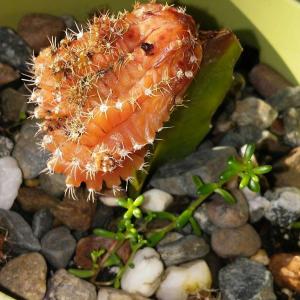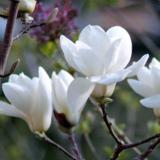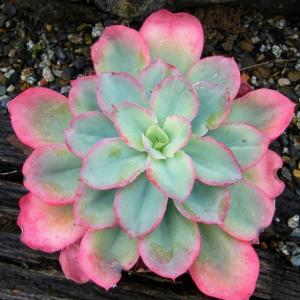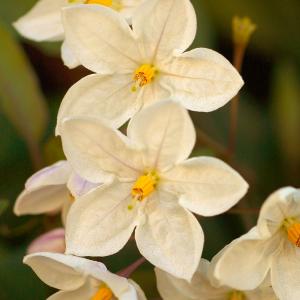文章
Abigal
2017年02月22日

No matter what time of year it is, there are times when we want to bring the beauty and gifts from the #garden indoors. Whether it’s to keep your “green thumb” warm during the winter months, because you live in a space with no outdoor gardening spot, or just because you love to have #plants indoors as well as out, here are some easy indoor gardening projects to keep you busy when you aren’t outdoors!

From ‘The Kitchn’, learn how to plant succulents in eggshells! Our feature project, above and below – This is a really organic project great for a kitchen, and especially for someone who loves to cook. Could you do the same thing with sprouts?

‘Holiday Sparkle’ shows us how to grow green onions indoors. These are great because the more you cut them, the more they grow!

Heres a project for more onions for a bigger household… make this vertical onion planter from a pop bottle! From ‘Auntie Dogmas Garden Spot‘…

From ‘Remove and Replace’, learn how to regrow romaine lettuce from that salad stump… Grow it once, never again!

‘Parents.com’ shows us how to plant an odds and ends garden, this with leftover celery. Kids love this kind of thing, fun family project.

Last, learn to grow a lemon tree indoors! From ‘The Kitchn’, this is a good tutorial on how to grow lemons indoors, and also some information on where, and what type, to buy! Find even more information on growing lemons from ‘Jim Hofman‘.

So no matter what your reason for keeping it indoors, here are a couple of projects to bring the garden to the window sill!

From ‘The Kitchn’, learn how to plant succulents in eggshells! Our feature project, above and below – This is a really organic project great for a kitchen, and especially for someone who loves to cook. Could you do the same thing with sprouts?

‘Holiday Sparkle’ shows us how to grow green onions indoors. These are great because the more you cut them, the more they grow!

Heres a project for more onions for a bigger household… make this vertical onion planter from a pop bottle! From ‘Auntie Dogmas Garden Spot‘…

From ‘Remove and Replace’, learn how to regrow romaine lettuce from that salad stump… Grow it once, never again!

‘Parents.com’ shows us how to plant an odds and ends garden, this with leftover celery. Kids love this kind of thing, fun family project.

Last, learn to grow a lemon tree indoors! From ‘The Kitchn’, this is a good tutorial on how to grow lemons indoors, and also some information on where, and what type, to buy! Find even more information on growing lemons from ‘Jim Hofman‘.

So no matter what your reason for keeping it indoors, here are a couple of projects to bring the garden to the window sill!
0
0
文章
Lisa
2017年02月20日

#Lawn care in winter is required for lush green lawn in spring. Learn how to care for it in this educative guide.
Lawn preparation for winter is one of the most important gardening task that must be done in time and correctly. Adequate fertilization, mowing and removing weeds and debris provide the lawn healthy appearance but there are a few other things you should do, which are given below.

Lawn Preparation for Winter
1. Scarification
Scarification is done to remove thatch or undergrowth from the lawn. This removes way moss, weeds and dead organic debris which impede the flow of water, air and nutrients to the roots. You can scarify your lawn in late spring when all the dangers of frost are passed or in the fall. Before scarifying your lawn, mow it. Scarify only to remove the top layer of thatch, don’t penetrate the blades too deeply.
2. Aeration
Aeration improves the airflow in the soil and reduce its compactness so that water, fertilizer and oxygen are easily absorbed by the roots. This treatment improves the condition of the roots and helps in quick regeneration of grass after the winter. Aeration should be done in fall in late September or October. However, according to a research conducted by Purdue University, aeration done too late even until the November might be helpful.
3. Liming
Generally grasses grow well in neutral pH and if your soil is acidic, do liming. Best time to lime your lawn is fall, after the aeration. The cycle of freezing and thawing in winter assists the penetration of lime into the soil.
4. Overseeding
After the aeration, if you see holes and patches apply the seeds at a rate of 0.8 Oz (25 g)/m2. Colder months are perfect time for seeding scraggly patches of lawn. It is done when soil is not frozen but cold enough to stop germination until next spring. To learn more on how to do it, read this.
5. Top Dressing
Top dressing is the process of application of thin layer of soil, sand or compost over the turf. Top dressing is done after the aeration and overseeding. It helps in leveling the surface of lawn, protect it from extreme temperatures, controls thatch, improves drainage and resistance to drought. Plus, there are many more other advantages. However, it is skipped in home gardens and lawns. To learn more about top dressing, checkout this educative article.
6. Fertilization
By proper fertilizing the lawn before winter you can increase the turf resistance to freezing temperatures. The application should be done 2-3 weeks prior to first frost date using so called “winterizer fertilizer” such as 24-2-14 NPK. But beware that winterizer should not be applied to warm season grasses as it will encourage them to grow. The high level of potassium in winterizer makes grasses more tolerant to cold and stress, helping them to survive in winter.
7. Mowing
Grass must not be cut too short or too high. Optimum height for last mowing job is leaving 2/3 of grass blades. Last mowing is best done anytime in between late October to mid November, depending more on the prevailing weather conditions. If you mow the lawn too early before winter and warm weather has made the grass to grow again, mowing must be repeated. During winters, mowing is not required. Once temperature falls below 40 F (4 C) grass starts to grow slowly.

Lawn Care in Winter
1. Weeding
To find a perfect lawn in the spring, continue weeding, even in winter. Thus, the uncontrolled growth of weeds do not choke your lawn. But rest assured, it is paradoxically easier in winter. At this time, weeds grow faster than grass. This makes them much easier to spot on – except of course, when snow covers the garden.
2. Watering
Watering the lawn in winter is almost never necessary. Nature takes care itself with the frequent rains of this period. However, if there is no rain and the grass suffers, then you can water the lawn. Choose a frost free day when temperature is above 40 F (4 C), water half an inch in the morning.
3. Cleaning
Another important step is to regularly clean the fallen leaves and debris. Fallen leaves if remain on the turf reduce its durability. Damp leaves “pressed” under a layer of snow cut off the supply of oxygen and cause rotting of the lawn. You can use this organic litter to make compost or to mulch other plants.
Lawn preparation for winter is one of the most important gardening task that must be done in time and correctly. Adequate fertilization, mowing and removing weeds and debris provide the lawn healthy appearance but there are a few other things you should do, which are given below.

Lawn Preparation for Winter
1. Scarification
Scarification is done to remove thatch or undergrowth from the lawn. This removes way moss, weeds and dead organic debris which impede the flow of water, air and nutrients to the roots. You can scarify your lawn in late spring when all the dangers of frost are passed or in the fall. Before scarifying your lawn, mow it. Scarify only to remove the top layer of thatch, don’t penetrate the blades too deeply.
2. Aeration
Aeration improves the airflow in the soil and reduce its compactness so that water, fertilizer and oxygen are easily absorbed by the roots. This treatment improves the condition of the roots and helps in quick regeneration of grass after the winter. Aeration should be done in fall in late September or October. However, according to a research conducted by Purdue University, aeration done too late even until the November might be helpful.
3. Liming
Generally grasses grow well in neutral pH and if your soil is acidic, do liming. Best time to lime your lawn is fall, after the aeration. The cycle of freezing and thawing in winter assists the penetration of lime into the soil.
4. Overseeding
After the aeration, if you see holes and patches apply the seeds at a rate of 0.8 Oz (25 g)/m2. Colder months are perfect time for seeding scraggly patches of lawn. It is done when soil is not frozen but cold enough to stop germination until next spring. To learn more on how to do it, read this.
5. Top Dressing
Top dressing is the process of application of thin layer of soil, sand or compost over the turf. Top dressing is done after the aeration and overseeding. It helps in leveling the surface of lawn, protect it from extreme temperatures, controls thatch, improves drainage and resistance to drought. Plus, there are many more other advantages. However, it is skipped in home gardens and lawns. To learn more about top dressing, checkout this educative article.
6. Fertilization
By proper fertilizing the lawn before winter you can increase the turf resistance to freezing temperatures. The application should be done 2-3 weeks prior to first frost date using so called “winterizer fertilizer” such as 24-2-14 NPK. But beware that winterizer should not be applied to warm season grasses as it will encourage them to grow. The high level of potassium in winterizer makes grasses more tolerant to cold and stress, helping them to survive in winter.
7. Mowing
Grass must not be cut too short or too high. Optimum height for last mowing job is leaving 2/3 of grass blades. Last mowing is best done anytime in between late October to mid November, depending more on the prevailing weather conditions. If you mow the lawn too early before winter and warm weather has made the grass to grow again, mowing must be repeated. During winters, mowing is not required. Once temperature falls below 40 F (4 C) grass starts to grow slowly.

Lawn Care in Winter
1. Weeding
To find a perfect lawn in the spring, continue weeding, even in winter. Thus, the uncontrolled growth of weeds do not choke your lawn. But rest assured, it is paradoxically easier in winter. At this time, weeds grow faster than grass. This makes them much easier to spot on – except of course, when snow covers the garden.
2. Watering
Watering the lawn in winter is almost never necessary. Nature takes care itself with the frequent rains of this period. However, if there is no rain and the grass suffers, then you can water the lawn. Choose a frost free day when temperature is above 40 F (4 C), water half an inch in the morning.
3. Cleaning
Another important step is to regularly clean the fallen leaves and debris. Fallen leaves if remain on the turf reduce its durability. Damp leaves “pressed” under a layer of snow cut off the supply of oxygen and cause rotting of the lawn. You can use this organic litter to make compost or to mulch other plants.
1
0
求助
Donnajo C Stoops
2017年01月13日

ive had her 6months maybe more i live in trinity county an there she was fine..during the winter we come to the bay it rained a lot an noticed it was "rotting" i gess..i brought her inside n shes become to look like this..what can i do i tead on another sitr that the moon cactus is made to die is that trye hlep me please


0
0
Donnajo C Stoops:thank u i have done all but cut the roots off ill be doing that tomorrow
Andy:@Donnajo C Stoops Remove the plant gently from its pot. If the cactus is affected by rot, the roots will display blackened tips. Depending on the severity of the disease, rotten cactus roots will be slimy with black or brown decay. If you determine that your cactus is rotting, it’s critical to act fast. Rot is a deadly disease and once it progresses, the only option is to discard the plant and start fresh.
Erin:If you catch the disease early, you may be able to save it. Remove the cactus from the container immediately. Trim away affected roots and rinse the remaining roots gently to remove fungus. Place the plant on a paper towel and put it in a warm, well-ventilated location so the roots can dry overnight. Place the cactus in a dry pot with fresh, lightweight potting soil the next day. Be sure the pot has a drainage hole so the soil can drain freely. Wait a couple of days before watering the newly potted cactus. When you resume watering, be sure you understand the most effective way to irrigate your cactus. Always water thoroughly until water drips through the drainage hole, then let the plant drain before returning the pot to its drainage saucer. Never let the plant stand in water. Be careful not to kill the plant with kindness; slightly underwatered conditions are healthiest. Don’t water until the top ½ inch of soil feels dry. Water sparingly during the winter months, but don’t allow the potting mix to become bone dry. Place the plant in bright sunlight during fall and winter and in light shade during spring and summer.
Donnajo C Stoops:i have it inside by my window should i let it dry out
我是小花:Winter waters the capacity of the moisture in wanting to control winter plant is gotten lesser than the summer much, often need not water.Sunshine is good for your plants.
文章
stone
2016年12月29日

#suncculents #winter Succulents are such a popular and easy to care for plant these days.However, a freeze thaw / climate and snow generally is not a succulents best friend.
1. Watering
Pour water into the top of the succulent container until it drains out the bottom. Water the succulents deeply but less often in the winter. Let the soil dry out completely before watering again.
2. Sunlight
Succulents survive with indirect light during the winter.Place the dormant succulent in an area with at least three to four hours of bright light.Usually try to do this a couple of days a week during winter.
3. Temperature
When the temperature outdoors starts to cool below 60 degrees Fahrenheit start tapering off with watering.Bring your succulents inside when outside temps hit 40 degrees. Keep the temperature of the room the succulents are in around 50 to 55 degrees Fahrenheit during the winter. Many succulents such as aeoniums and living stones do not tolerate colder temperatures.
4. Check frequently for bugs
I've heard through other gardeners that 3 parts rubbing alcohol and 1 part water can be wiped onto any succulent that may develop aphids over winter.
You can use a cotton ball or a soft paper towel to apply it and make sure to check underneath the leaves. Also make sure to separate that plant from others until the aphids are completely gone.
5. Feeding
Feed the succulents one last time at the end of summer. Succulents only need diluted fertilizer while they are actively growing. Stop feeding when the plants stop growing for the year and go dormant, which occurs when the temperatures drop and the light level falls. Too much fertilizer causes succulents to develop soft leaves, which are prone to rot.

1. Watering
Pour water into the top of the succulent container until it drains out the bottom. Water the succulents deeply but less often in the winter. Let the soil dry out completely before watering again.

2. Sunlight
Succulents survive with indirect light during the winter.Place the dormant succulent in an area with at least three to four hours of bright light.Usually try to do this a couple of days a week during winter.

3. Temperature
When the temperature outdoors starts to cool below 60 degrees Fahrenheit start tapering off with watering.Bring your succulents inside when outside temps hit 40 degrees. Keep the temperature of the room the succulents are in around 50 to 55 degrees Fahrenheit during the winter. Many succulents such as aeoniums and living stones do not tolerate colder temperatures.

4. Check frequently for bugs
I've heard through other gardeners that 3 parts rubbing alcohol and 1 part water can be wiped onto any succulent that may develop aphids over winter.
You can use a cotton ball or a soft paper towel to apply it and make sure to check underneath the leaves. Also make sure to separate that plant from others until the aphids are completely gone.

5. Feeding
Feed the succulents one last time at the end of summer. Succulents only need diluted fertilizer while they are actively growing. Stop feeding when the plants stop growing for the year and go dormant, which occurs when the temperatures drop and the light level falls. Too much fertilizer causes succulents to develop soft leaves, which are prone to rot.
7
2








